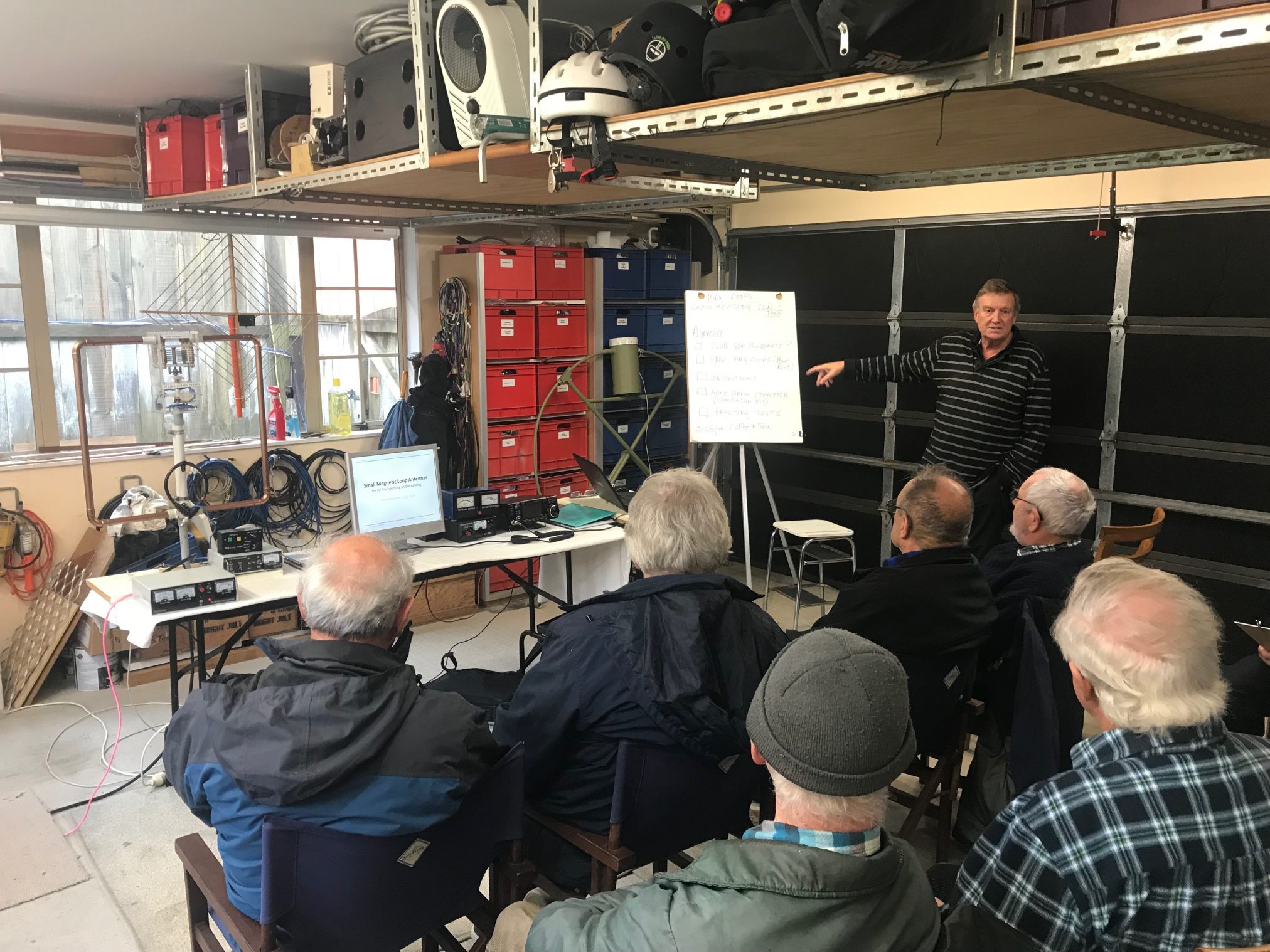
Our annual club BBQ was held on 16 January 2018 at the Chairperson’s QTH in Churton Park. 15 members and one partner were present.
Following the BBQ (approx. 7.30pm – 8pm), members disappeared into Mike’s garage to look over Silent Key Doug ZL2AOV’s collection of parts, projects and equipment. Around two thirds of the high value items received a bid in excess of the reserve and were sold on the night. Some missed out on the piece of gear they were seeking to acquire because they were over-bid. THere was also plenty of junk. Only five crates ended up at the tip, so most of Doug’s amateur radio gear was recycled into the deep junk boxes of club members. Some got absolute bargains!


 A total of 15 members and XYLs met over Christmas dinner on Monday 3rd December at the 1841 Restaurant in Johnsonville, taking advantage of the 2 for 1 deal. Those attending the dinner thought it represented good value.
A total of 15 members and XYLs met over Christmas dinner on Monday 3rd December at the 1841 Restaurant in Johnsonville, taking advantage of the 2 for 1 deal. Those attending the dinner thought it represented good value.
